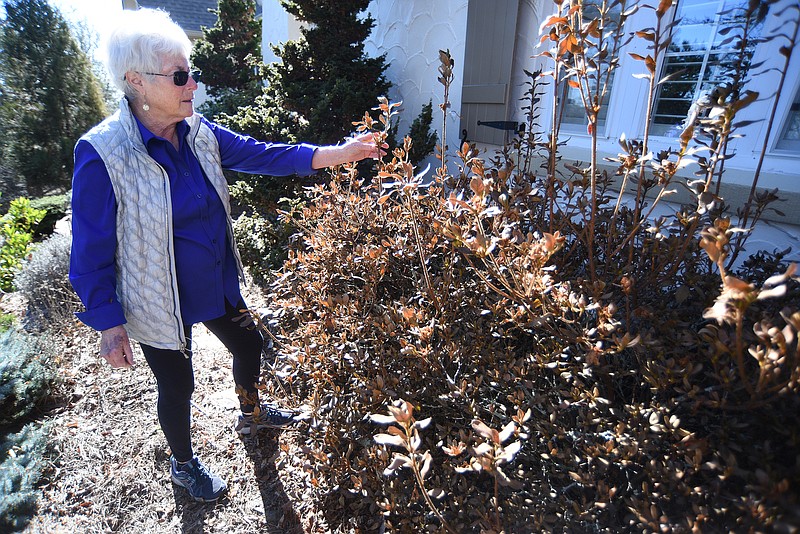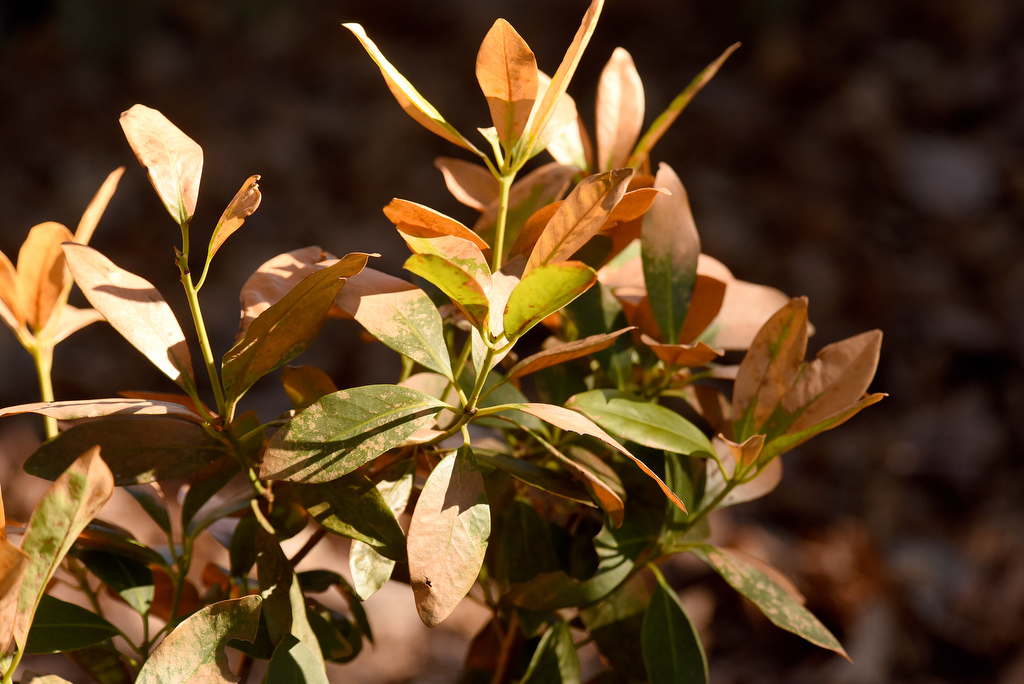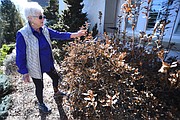The arctic blast that delivered single-digit temperatures to the area just before Christmas left not only frozen pipes but yards full of frozen plants, causing concern among homeowners who are now finding even well-established plants brown and withered.
"Everything took a hit," said Haley Treadway, the University of Tennessee Extension agent for Hamilton County.
Gardeners shouldn't give up hope this soon, she cautioned. Plants are resilient and can usually withstand the vagaries of weather. Brown leaves are obviously a concern for gardeners, especially on what should be an "ever green," but that doesn't mean the plant can't return to health.
According to the National Weather Service, temperatures in Chattanooga dropped 42 degrees, from 49 to 7, on Dec. 23, and didn't return to above freezing until the 34-degree high on Christmas Day. Low temperatures remained in the teens and 20s through Dec. 28. By Dec. 29, the roller-coaster patterns that define the tri-state's weather moderated to unseasonably warm temperatures in the high 60s, subjecting the plants to "completely opposite weather," Treadway said.
The biggest problem with the temperature plunge "wasn't necessarily the cold temperatures but how quickly the temperature changed," she said.
Document
Plants have natural processes that exchange the water in their leaves for sugar from their roots, she explained.
"When winter weather is coming, they send some of that water (which is subject to freezing) down to the roots so the leaves are not as vulnerable and they bring the sugar up," she said. "The sugar has a chemical reaction to act as antifreeze in the leaves.
"Our plants did not get the opportunity for that reaction to take place," she said. "They were not able to acclimate to how fast the temperature dropped. If it had happened incrementally, we would see significantly less damage to plants than we've seen recently."
Even some master gardeners suffered the consequences of the deep freeze.
"I should've covered mine -- I know better," said Lee Anderson, whose Rossville yard includes an array of camellias. "I have covered them when it was less cold."
Anderson, a member of Master Gardeners of Hamilton County since 2012, said she's more concerned about her sasanqua camellias than the japonica variety, which are more cold hardy and can withstand temperatures as low as 5 degrees, according to the label.
"Anybody who has japonica camellias shouldn't have any problems with those," she said. "My japonica looks great. It's as green as it was in the fall. My sasanquas are the weak ones. I'm hoping they'll come back."
Ann Brown, a Master Gardeners member since 2010 from Lookout Mountain, Tennessee, said her boxwoods suffered -- "all the top leaves are dead" -- and other plants that cover her yard show varying degrees of distress.
"Some of my plants have damaged leaves and the plant right next to it doesn't have. I don't know what to think about that," she said, adding that wind gusts are likely to blame.
"It has to do with how the wind comes through your yard," she said. "We did have some good wind with the cold."
Most of her plants are natives, which can better withstand the weather, whether it's winter's wind and cold or summer's heat and drought.
Besides, she said, her yard is about one-third of an acre and her plants too numerous to coddle. "I don't have that many sheets," she said.
Treadway said it's too soon to know which plants will be able to make a comeback when spring arrives.
"If you have a plant you're concerned about, you can still implement winter protection protocols," such as trunk wrap for trees and cloth covers for shrubs, she said.
"The whole plant may not be damaged," Treadway said. "Maybe it's just the tips or the leaves. What you have to do is see what leafs out (in spring). Right now, with the weather going hot and cold, you don't want to make any fresh cuts."
Customers at Signal Mountain Nursery are being given similar advice, said employee Kristen Mazza.
"Right now, we're at that wait-and-see stage," she said. "Give them a little time. The hard freeze did take a toll on quite a few, but wait until springtime and take inventory."
Nick McCormick, an employee at America's Gardens Nursery in Red Bank, said gardeners should try to ignore the marred foliage and concentrate instead on what may still be viable underground.
"As long as the roots are good, most will come back," he said. "The roots are the biggest issue. You're not going to know if the roots are damaged until new growth starts in a month and a half."
Contact Lisa Denton at ldenton@timesfreepress.com or 423-757-6281.


